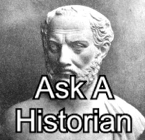|
|
|||||||||
New France | 7 Years War | 13 Colonies | 1812 | Rebellions | South Africa | World War I | World War II | Korea | Modern Wars | Peace Keepers | Medals
Storm Clouds | Mobilization | Fall of France | Battle of Britain | Training | Pacific War | Hong Kong | Conscription | Dieppe | Spartan | Battle of the Atlantic | Sicily | Italy | Overlord | Falaise | Occupation | France 44 | Holland | Germany 45 | VE | VJ
On September 1st, in anticipation of the war, the Canadian Defence Department authorized the implementation of Defence scheme #3 and order the mobilization of the Mobile Force. On September 19th, the Federal government dismissed proposals for the formation of 3 divisions and instead order that one Division be trained and prepared for deployment overseas. A second Division would also be formed and prepared for defensive missions of Canada.
Mackenzie King felt that the two issues to be avoided in the mobilization effort were sending too many forces overseas which might suffer high causalities and resorting to conscription which in Quebec would drive supports away from the Liberal party and reopen wounds revolving around conscription during that conflict.
King proposed that the Canadian war effort should be directed towards the creation of a large air force and an expanded navy, both of which could be manned by volunteers and keep Canadian forces out of direct military action. The air force program developed into the British Commonwealth Training Plan which eventually was composed of over 250,000 men who trained pilots across Canada, contributed fighter pilots to the war effort and assembled and trained bomber crews who were to play an important role in the air war over Europe.
The Canadian navy grew to over 100,000 men during the war and as the Battle of the North Atlantic developed, the RCN became one of the main combatants in the final victory of the allies. y the end of WWII the Canadian navy was the third largest in the world after the United States and Great Britain.
The recruitment to fill out the ranks of the 1st and 2nd Divisions began, About 4200 veterans from the First World War joined up. French Canadian enlistment was slow due to the fact that the army was organized around an English speaking core of professional officers and militiamen and that although France was fighting, the war was once again looked upon as somewhat of an imperial empire war in Quebec. Only Quebec and Saskatchewan fell short of their recruiting targets. About 61.500 men were recruited in this first drive and many were those who had suffered badly from the effects of the depression and were looking for a way out of unemployment. Others were the adventurous types that join in almost every war that want to do something different and stand up for their country.
|
The initial training of these first troops was carried out at or near their homes while the army scrambled to acquire or produce the equipment they would need to fight. This forced the government to start spending money and priming the pump so that the economy began to really revive from it's 10 long years of stagnation. Once the logistics had been set up in overseas, the troops of the 1st Canadian Division were order in December of 1939 to Halifax for embarkation on the ships that would take them to England. Departing from New Westminster, BC |
 |
Upon arrival in Britain they were shipped to Aldershot where in January of 1940 their training began in earnest. What was known as the phony war, which was the period between the quick fall of Poland in September, 1939 and the launching of the German attack on France and the lowlands in May 1940, provided the Canadians with some time to get some real training in and get better equipment and support. This however was temporarily interrupted in April when the Germans invaded Norway and the Canadians were sent to Scotland for a few days expecting to go o Norway to fight. They were not sent and returned to Aldershot to continue preparations.
The rest of Canada began to buzz with preparation, vastly increased production demand, a quickly expanding government and military and a resonant increase in activity throughout the other sectors of the economy. The original plans for a limited army were slowly discarded and a larger plan for building it up were developed. The transformation from depression to a full scale war footing had begun.







